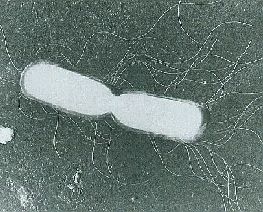Tokyo Food Safety Information Center » Good things to know » The microorganisms which cause food poisoning » Bacillus cereus
Bacillus cereus
Characteristics

Bacillus cereus is a type of soil bacteria, broadly distributed in the natural environment including: soil, water and dust, and also found in agricultural, livestock and marine products.
Food poisoning caused by this bacterium is classified into a diarrheal type and an emetic type. In both cases, the toxins produced by this bacterium relates to occurrence of food poisoning. In Japan, the latter, “emetic type” is more often found. This bacterium produces heat-resisting spores (resisting heat of 90° C for 60 minutes). The optimum temperatures for proliferation are 28° C to 35° C. The emetic vomiting causing toxin is strongly resistant against heat and is not deactivated even when heated at 126° C for 90 minutes.
Symptoms and major causing foods
Two types of symptoms are known, differentiated by toxin types:
| Diarrhea type | Emetic type | |
|---|---|---|
Where toxin is produced |
Small intestine |
Within foods |
Incubation period |
8-16 hours |
0.5-6 hours |
Primary symptoms |
Stomach pain and diarrhea |
Nausea and vomiting |
Causing foods |
Foods commonly found in lunch boxes, such as puddings. |
Chinese fried rice, rice pilafs, yakisoba (fried noodles), spaghetti. |
What are the key points to preventing bacillus cereus?
-
Do not cook large amounts of rice, noodles, or pastas at one time then keep them for long periods.
-
After foods are cooked, foods from cereals, etc. should be either kept warm in heated temperature keeping compartments, or divided into smaller portion amounts and immediately stored at a low temperature (8° C or less).